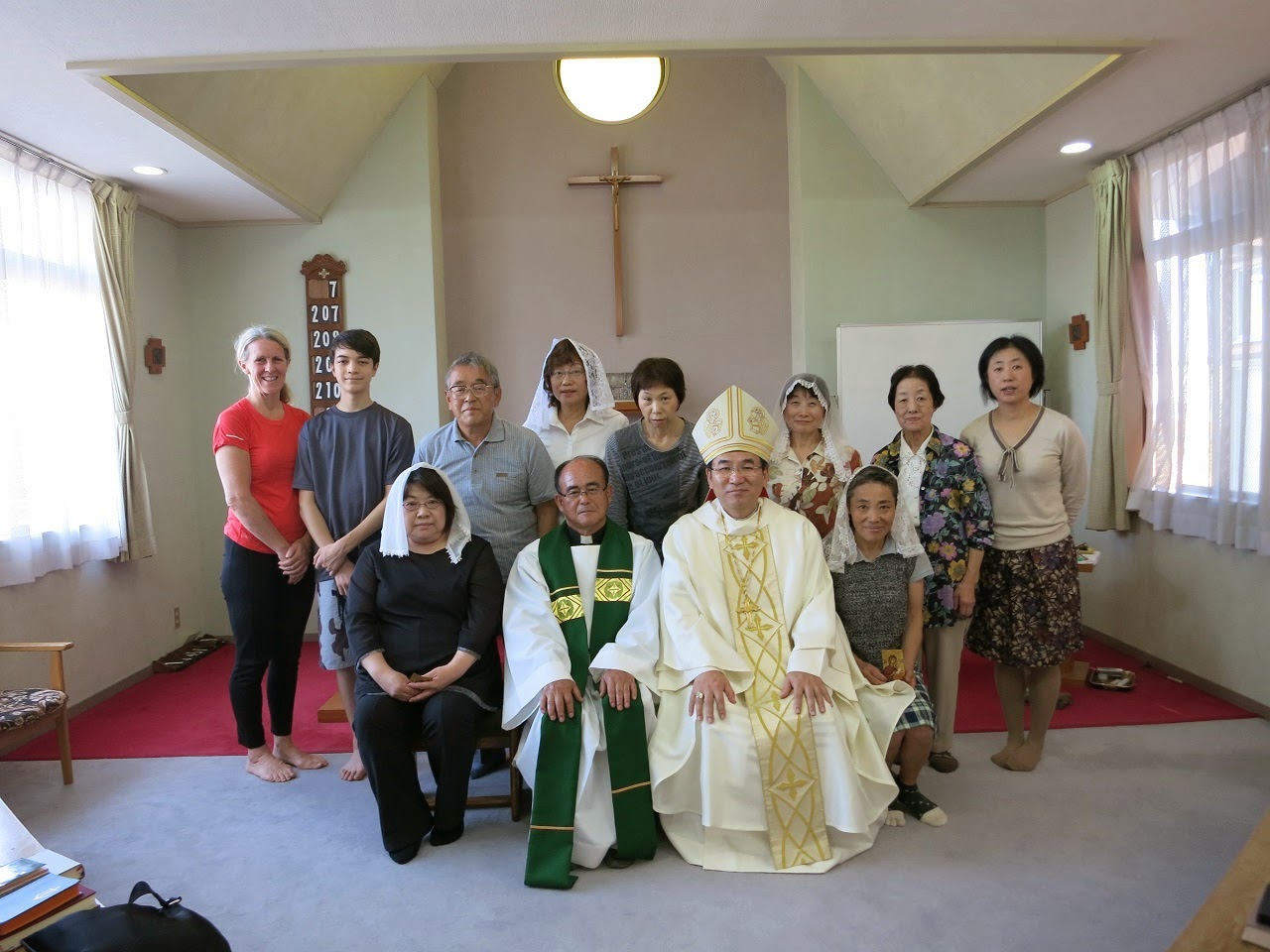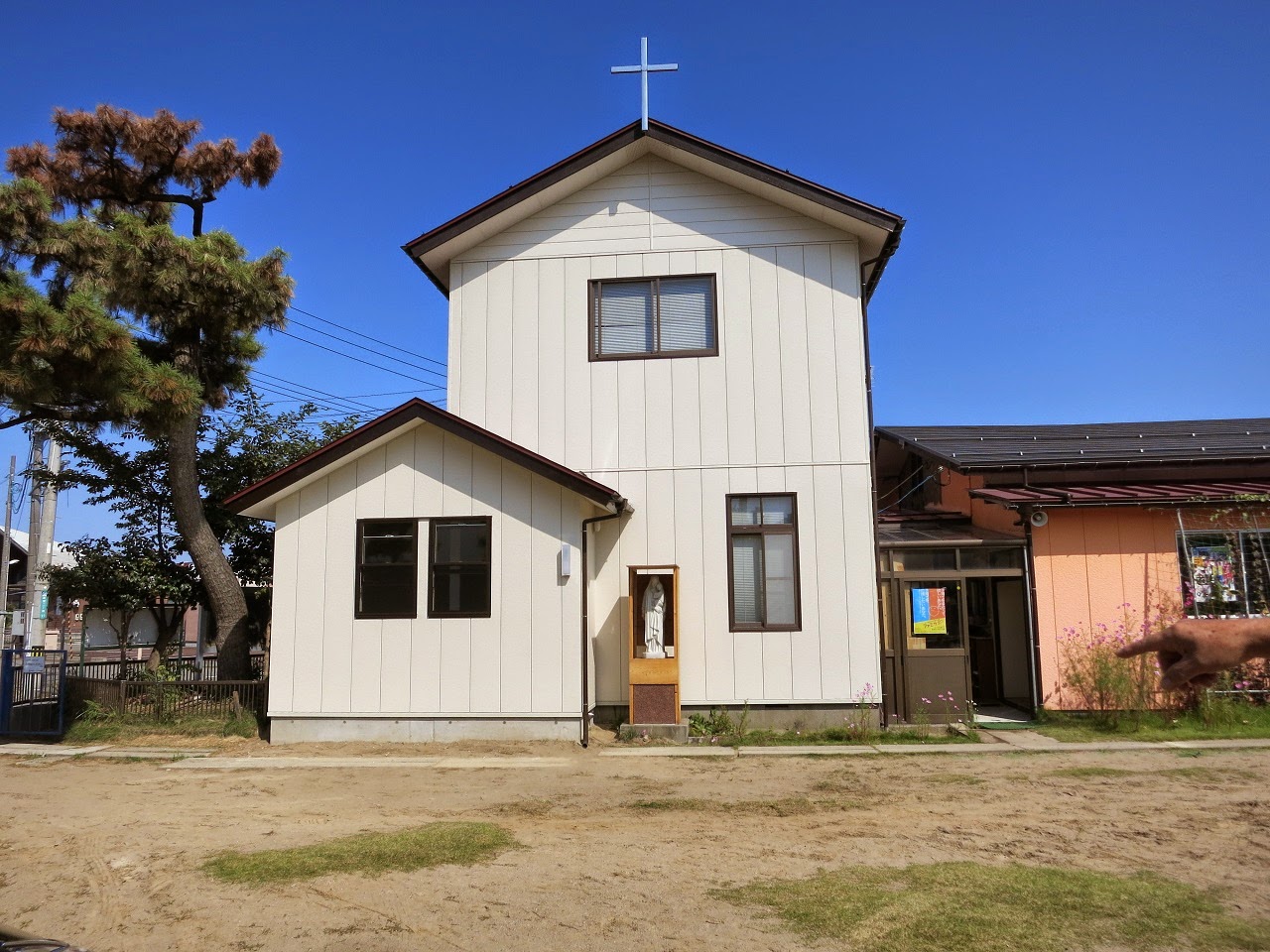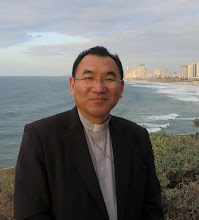Pastoral visit of Sado Catholic Church on 5 October. Sado is an island and 2 hand half hour ferry ride to reach from Niigata city. Church building is more than 100 years old built by French missionaries. Again community here is also so small and aging. There were two Masses on 5 October. 9:30am for the original parish community and 11 am for Filipino community in the island. Parish priest is Fr.Kawasaki and Fr.Lorenzo, the migrant chaplain for the diocese was visiting the Filipino community on that Sunday.
Though an aging society with fewer number of children is the current trend in Japanese society as a whole, this problem is much more acute in rural areas such as our diocese. Quite a number of farmers have been facing difficulties to find spouses from the native Japanese community. Therefore, it has become commonplace to see foreign-born wives in farming villages in the diocese. The majority of these wives are from the Philippines and, thus, it has become a pressing necessity to find a suitable way to extend pastoral care to this new type of immigrants to our diocese. In October 2010, we could manage to dedicate a church for one of these migrant communities in the city of Shinjo in Yamagata prefecture. But we may see many more migrant Catholics in all over the diocese.
An aging society with fewer children and drastic shift of youth population to major cities means the collapse of the present local communities. Recent report from one of the governmental think tanks on population change in Japan said by the year 2040, decreasing population may force more than 890 communities to close them down. Especially, according to the report, in Akita and Yamagata, 80% of their communities will perish by year 2040. This trend of decrease of population will definitely affect Catholic communities in the diocese.
As we have more than 30 parish communities in 3 prefecture which have been suffering from population decrease, the Diocese will definitely face severe challenge to maintain present number of Catholics. What are we going to do?
According to the government statistics in 2013, the Shinto group claims 3,713,187 followers in the Niigata diocese. At the same time, Buddhist sects claim that they have 2,257,855 members. However, these numbers cannot be accurate since the sum of members of Shintoism and Buddhism far exceeds the total population of the Niigata diocese which is 4,488,904 in three prefectures.
As a matter of fact, most of the population does not feel that they personally belong to these traditional religions, since both are seen as a matter of custom, with Shinto considered the backbone of Japanese culture and traditions and Buddhism considered as the religion of family tradition. Particularly regarding the Buddhism, people feel compelled by custom to maintain their Family altar (Butsu-dan) which houses plates indicating deceased ancestors. Also, the first-born son has an obligation to maintain the family grave. So the majority of the population considers their practice of Buddhism as limited to funerals and to rituals connected with ancestor worship. However, especially in rural areas, people feel a much stronger connection to both the Buddhist temple and the Shinto Shrine in their area as the uniting factor for their family and the local community respectively.
Unfortunately, past 20 years, Japanese public became quite suspicious over religious activities based on several sad incidents caused by new religious movements in Japan such as AUM Shinrikyo's mass murder case in Tokyo in 1995. Also effects of secularization are quite evident especially among youth. Traditional rural communities are quite conservative against any new initiatives and very cautious in accepting any changes in life style brought from outside world. This is very much so in my diocese since majority of local communities in 3 prefectures are rural farming villages. Because of the not-welcoming atmosphere towards to outsiders of this area, most of our parishes are located in rather developed towns or cities where people are much more open to new initiatives. Unfortunately we do not have any strong holds in rural area.
Traditional methods to penetrate into rural area such as through social welfare activities or through development programs does not work here since these concerns have been well taken care of by local governments for many years. Farmers have been a strong supporter of present national government run by LDP (Liberal Democratic Party) for past 60 yeas because the government has subsidized rural communities abundantly for many years. We still can not find a suitable way to go into the reality of rural communities.
Having said this, however, I still believe in the power of dialogue. It actually does not mean that we should engage ourselves in real talking with people but it is rather showing ourselves in the local communities doing something different and good or attractive. Such as our Caritas volunteer activities in Sendai diocese after the Great Tohoku Earthquake and Tsunami in March 2014.
Dialogue with people does not necessary mean actual conversation as such. How we create relationship with local people. Through our charitable activities, we could be witness of love of God. And through our attitude to be with local people in need, we could be witness of mercy of God and that would be our new evangelization in Japan today.









No comments:
Post a Comment